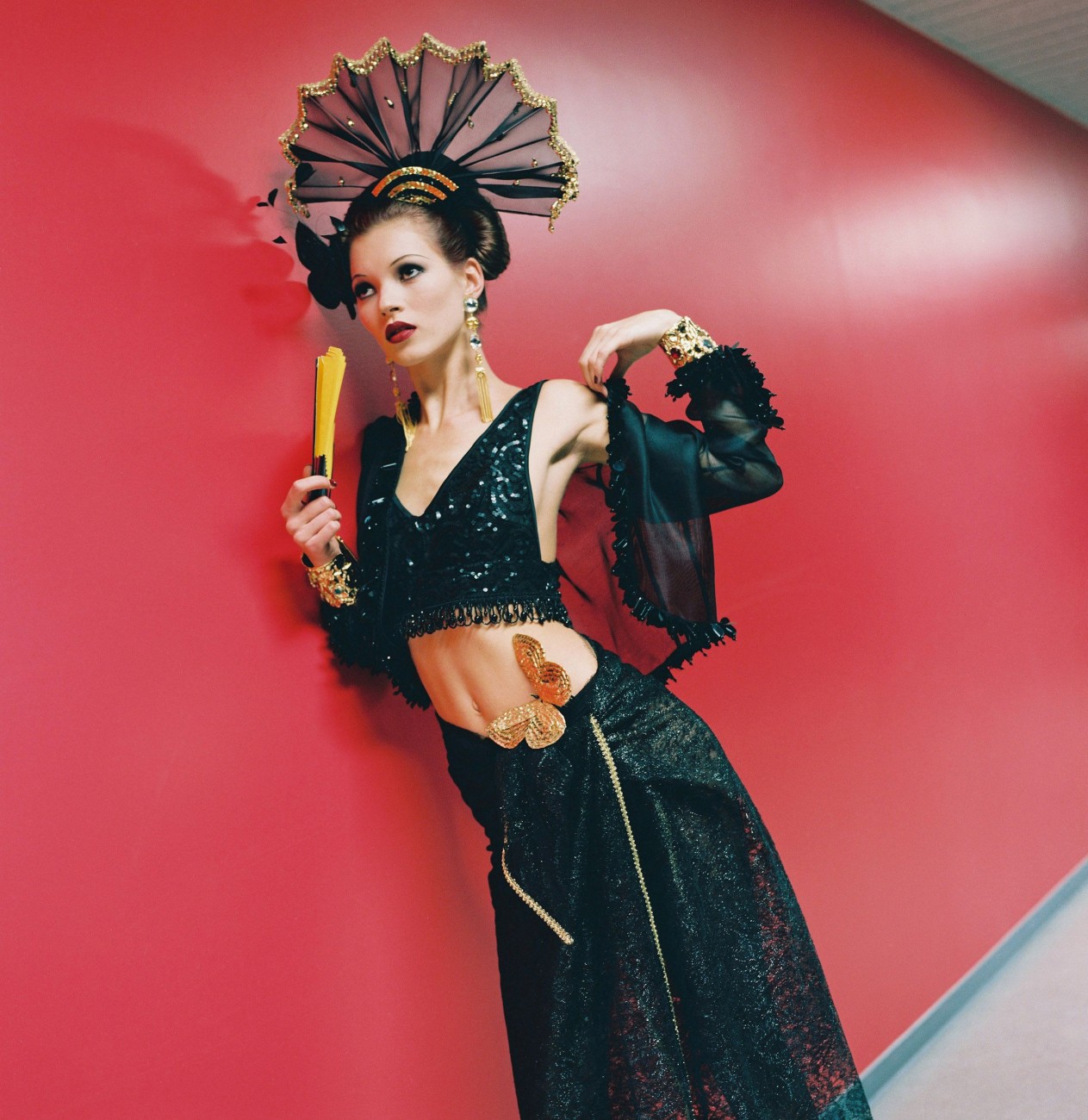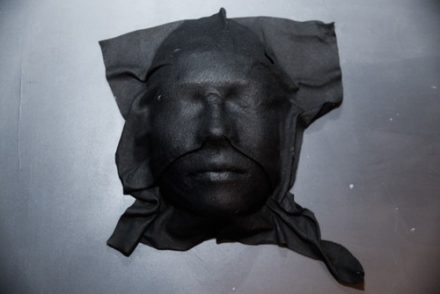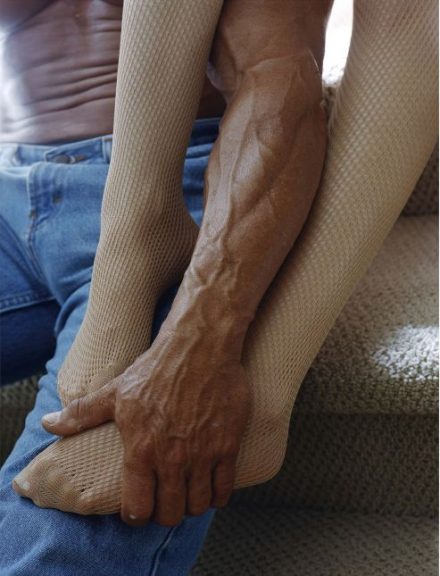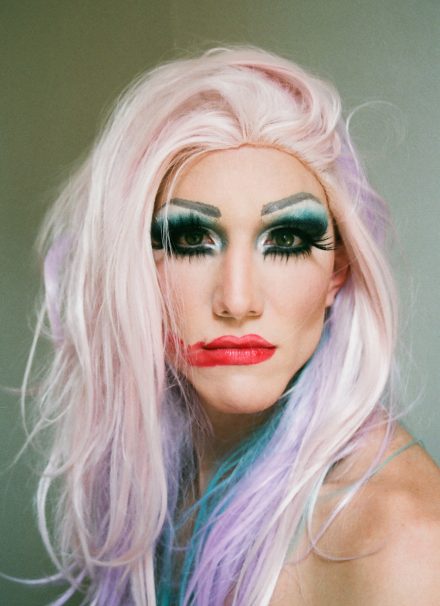The promise of everlasting “newness” is essential to the world of fashion photography. Most established magazines and advertising campaigns provide us with a constant flow of images displaying new looks, new models and new collections. Nevertheless, though the zeitgeist is the most important reference, a consistent aesthetic pattern exists that forms the background of contemporary fashion photography. The birth of this style is what the current presentation at the Helmut Newton Foundation tries to explore. Divided into three sections, the exhibition juxtaposes a range of commissioned photographs from Guy Bourdin’s oeuvre (including campaigns for clients such as shoe brand Charles Jourdan) and a selection of Helmut Newton’s late 20th century more commercial work. The cosy June’s Room at the museum is dedicated to Newton’s former assistant Angelo Marino who presents “Another Story”, a collection of everyday life iPhone snapshots.

Born in 1920 and 1928, Newton and Bourdin are two of the most influential fashion photographers of the last century. Best known for their portrayal of women, they combined editorial photography for magazines with shooting advertising campaigns for clients.
After taking a first look at the aesthetic compositions of Newton and Bourdin, we wanted to learn more about their impact on fashion photography. Thus, we had an inspiring chat with curator Matthias Harder on narrative oriented images and the influence of Newton and Bourdin today.
Œ: You curated an exhibition that showcases two very renowned and prominent photographers of the last century: Newton and Bourdin. Both were shooting for Vogue and similar commercial clients, they even lived in Paris at the same time. Where else do you see the overlap in their aesthetics?
Matthias Harder: If we look only at the aesthetics, I think you can say that both, Newton and Bourdin, marginalized the key elements of fashion in their images. For me, this is the most important point: They turned away from glamour and the commercial goods became secondary. The new visual language that they established intertwines the advertised product and the depicted woman with a story. Photos of Newton and Bourdin show women on a pedestal; and this pedestal was built from self-confidence instead of gallantry. Back in the 1960s, this was something new and unseen.

Œ: You already mentioned the narrative concept behind Newton’s and Bourdin’s images. Was it this kind of storytelling that influenced later fashion photography?
Matthias Harder: Yes, definitely! Of course they were not the only ones to adopt such a narrative style, but they shaped it and established it in fashion photography. By looking at their work, you can see a wide range of influences that Newton and Bourdin both incorporated and transformed into photos. Newton for example told crime stories that immediately remind us of film stills from David Lynch. Especially with this one photo from the mid-sixties, where you can see a woman running away from a plane, he even referred directly to Hitchcock’s crime movies. It is the same with Bourdin, in his dramatic images for Charles Jourdan a similar sense of storytelling is apparent. Nevertheless, they worked quite differently: while Newton made Polaroid tests upfront and planned his final photos in detail, Bourdin rather composed the images during the shooting. That way, he sort of became his own art director by cropping the finished photographs to convey his idea of narration.

The presentation at the museum contains two spatially separated exhibitions dedicated to Newton and Bourdin: „A Gun for Hire“ mainly entails later commercial works by Helmut Newton together with some single images that were shot for different national issues of Vogue. The presentation of Guy Bourdin is divided into three sections: Titled „Image Maker“, the exhibition highlights Bourdin’s creative approach as well as surrealistic and more narrative oriented photography.
Œ: Looking at the exhibition now that it is finished, do you have a favourite constellation?
Matthias Harder: There is no specific one; it is the constellation of the whole exhibition itself. Usually, we don’t mix the work of different photographers, but I think this juxtaposing makes us understand a lot. If you cross the hall from Bourdin to Newton, you get an idea of how fashion photography developed: how stories became central, how the position of women in western societies changed, how a freer world was formed. I decided to show the earlier archive of Bourdin and the later images of Newton, not only because most of this work consists of commissioned photography, but mainly to highlight links between the two. Skipping through time you can see that both stayed modern and contemporary by always renewing their photography.

Œ: The accusation that, in their images, Newton and Bourdin both subjected women isn’t new. What do you respond to people calling them sexists?
Matthias Harder: I like to answer with Newton’s words: He once said “I’m a feminist”. Of course he had an edgy attitude and provoked with his photography, but he also worked a lot towards the liberation of women. Fashion photography always objectified women; we know this from the 50s and 60s already. I think the argument that Bourdin and Newton are anti-feminist doesn’t hold. Of course they turned women into objects of their images, but to me it seems odd to accuse them of a practice nearly everyone in fashion photography had always taken part in.
Œ: Nevertheless, the sometimes stereotyped representation of women reinforces gender differences. What is the significance of Bourdin and Newton today, with those distinctions becoming increasingly blurred?
Matthias Harder: Back then, in the mid of the 20th century, society’s discourse was not yet at that point. But I think Newton and Bourdin were quite progressive and anticipated change. There is one photo by Newton for instance, that shows a woman giving another woman a light. In the 70s this image caused a public outcry because it was an overt code for lesbian love. Before, nothing like this ever happened in fashion photography, it was a no-go. Newton played with this provocation. To me, photos like this show that the women he portrayed and the ones who were attracted by these fashion photographs were incredibly modern and open-minded.

Although we still suspect Newton and Bourdin subjecting women and reinforcing gender clichés, we also appreciate the strong and assertive narratives their photos tell about sexual liberation. You can form your own opinion and see the exhibition for yourself at the Helmut Newton Foundation in Berlin until the 13th of May 2018.




